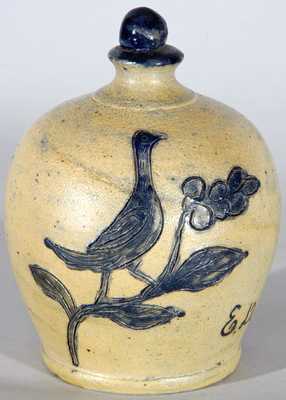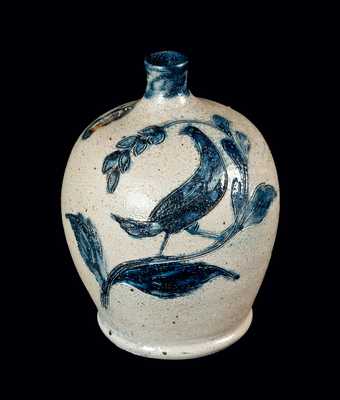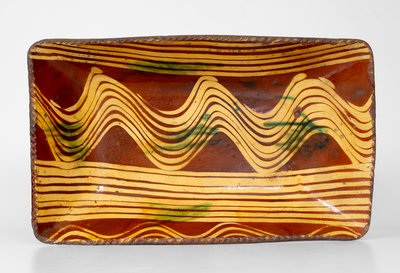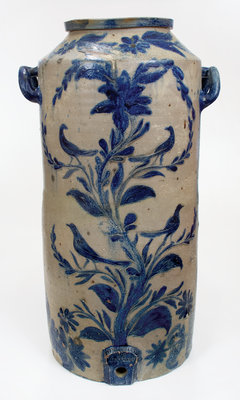The John Bradley Incised Ship Growler: Exceedingly Rare and Important Stoneware Presentation Pitcher with Double Incised Ship and Cobalt Floral Decorations, Inscribed "John Bradley's Growler," attributed to the Richard C. Remmey Pottery, Philadelphia, PA, circa 1875, ovoid pitcher with footed base, tooled accents to body and collar, and semi-rounded rim, decorated with two incised and cobalt-highlighted, three-masted ship motifs, each replete with numerous sails, portholes, an anchor, a pennant, and an American flag. The incised initials of the pitcher's owner, "J.B.," for John Bradley, appear on the bow. Incised above with the cobalt-highlighted inscription, "John Bradleys Growler." Two brushed tulip motifs in the distinctive Remmey style flank the incised decoration, while five horizontally-brushed tulips decorate the pitcher above. Swag motifs adorn the collar and cobalt highlights appear at the handle terminals. While members of the Remmey family potted for over a century in three port cities (New York, Baltimore, and Philadelphia), this pitcher is the first stoneware piece with ship decoration known to us that can be firmly attributed to one of their potteries. The decoration, color, and form, clearly indicate it was made at the Richard Clinton Remmey pottery in Philadelphia. Captain John J. Bradley was a mariner and long-time Delaware River pilot bringing ships into Philadelphia for decades on end. The Remmeys probably knew him personally as they regularly took advantage of Philadelphia's status as a major port city to ship their wares far and wide. The skill of the incised decoration--a hallmark of the Remmey family since their tenure in 18th century Manhattan--suggests that Richard Remmey himself was the possible decorator. The over-the-top decoration, presentation inscription, and appealing form of this work rank it among the great creations of this dynastic American potting family. Excellent condition. A 3 1/2" Y-shaped , primarily surface-level line from rim on proper left side of pitcher, only a small portion of which is visible on the interior. A few other, very short and minor lines to rim and spout. A glazed-over base chip including surface crazing. A faint diagonal 3" surface line near base on proper right side of pitcher, not visible on interior. H 9 1/4".
























